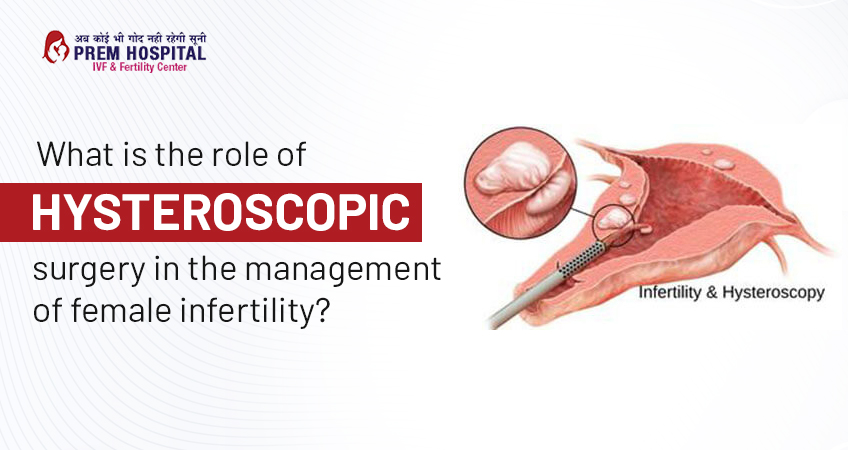Infertility is known to be an essential global health care issue. Approximately 9% of couples of their reproductive age suffer from infertility. And this rate is even much higher in some provinces, such as Central and Eastern Europe. Women’s infertility is observed largely, and the reasons can be either organic (organic infertility) or non-organic (practical or unexplained infertility). Nevertheless, the primary cause of infertility in women is uterine factors. The risk of pre-term delivery and miscarriage increases due to these factors. These factors can be congenital anomalies, like uterine septa and subsepta. Attained ones, like myoma, polyps, and intrauterine grips, can also be some of them.
There are various standard diagnostic approaches for testing infertility, such as tubal patency and ovulation tests. Testing the endometrium and the uterine cavity morphology is also necessary since these two play an essential part in presentation and embryo implantation.
Hysteroscopy for infertility
Diagnosing and treating intrauterine disease has been transformed with the preface of hysteroscopy for infertility practice. Diagnostic and operative hysteroscopy has become cost-effective, more efficient, protected, and beneficial because of new technological and methodological growth. The most common sign of hysteroscopy is abnormal uterine bleeding (AUB), also used in infertility cases and Mullerian anomalies.
A very less percentage (only 2 to 3%) of infertile women suffer from uterine factors. At the same time, the percentage of women having intrauterine lesions is much more (40–50%) than earlier. These lesions can ruin spontaneous fertility and decrease pregnancy rates in aided reproduction. Publicized observational researches indicate boosted pregnancy ratios after the hysteroscopic disposal of submucous fibroids, endometrial polyps, intrauterine adhesions, and uterine septum, which can be found in 10% to 20% of women pursuing treatment for subfertility.
In this context, hysteroscopy is the widely trusted and standard method for fertility surgery for females and screening of the uterine cavity. The feasibility of hysteroscopy makes it a well-tolerated and safe procedure. Directly picturing the tubal Ostia, endometrial cavity, or endocervical canal, along with their pathological abnormalities, is easy during in-office hysteroscopy. Furthermore, hysteroscopy has a 1-step approach of “see and treat”; thus, it detects and treats the anomalies. The other exclusive diagnostic methods, like hysterosalpingography or transvaginal sonography, lack this approach.
Current evidence
Current evidence has emphasized the probable significance of hysteroscopic surveillance of intrauterine disorders to improve reproductive effects and reduce the interval between diagnostic testing and prospective pregnancy in women withstanding assisted reproductive methods. For this purpose, hysteroscopy is evolving as a consolidating routinary stage of the infertility workup. Their other way also counsels an infertile couple.
Holding up all the above, the Special Issue “Female Fertility and Hysteroscopy: existing knowledge and forthcoming directions” intends to fetch the readers both basic research and a detailed survey and meta examination of the practicing hysteroscopy to treat infertile women. Specifically, the Special Issue deems both clinical labors and translational studies, proposing the likelihood to examine the impact of modern methods and appliances on the accomplishment of diagnosis and therapy based on hysteroscopy in enhancing the reproductive and gestation outcomes of infertile sufferers.
Recommendation
It is proposed to diagnose and deal with these irregularities to optimize uterine conditions and increases the success rate of in vitro fertilization. Hysteroscopy can diagnose tiny uterine lesions that may not be readily gathered by traditional way, like transvaginal sonography without or using saline or gel as discrepancy media, pursued by hysterosalpingography. Hysteroscopy enables immediate endometrial lining visualization examination of the probable implantation area, which is an essential step in managing those women having infertility. It is often correlated as the golden standard.
Several studies have assumed that when laparoscopy is conducted, it should be blended with hysteroscopy to finish the assessment before beginning the infertility treatment.
People also ask, is it safe to be pregnant right after hysteroscopy?
Although diagnostic hysteroscopy is a procedure with the least invasiveness, it continues to be a contraindication for a viable pregnancy. Whether the method itself, the distention forum, or the strength used while in the procedure generates harmful impacts on early pregnancy stays unknown.
Conclusion
The role of hysteroscopy in organizing the infertile female stays under discussion. Although a variety of studies indicates that the method is well resisted and beneficial in dealing with intrauterine pathologies, there is no peace on the cogency of hysteroscopic surgery in refining the prophecy of subfertile women.
There are insufficient future randomized prosecutions to indicate that surgical disposal of all intrauterine irregularities enhances fertility or IVF effects. Still, published observational outcomes indicate an advantage for resectioning sub-mucosal adhesions, leiomyomas, and at least a subset of polyps in boosting pregnancy rates.
Additional randomized controlled research with sufficient controls is desired to corroborate the significance of the hysteroscopic disposal of the suspected uterine septum, submucous fibroids, endometrial polyps, or intrauterine clings in women with unexplained infertility or previously helping reproductive technology (IVF, IUI or ICSI).
So, are you struggling with female infertility? If yes, look for the best fertility hospital in Meerut to get the best outcomes. Clinical treatment involves counseling infertile couple to let them know about the treatment and address their issues.

